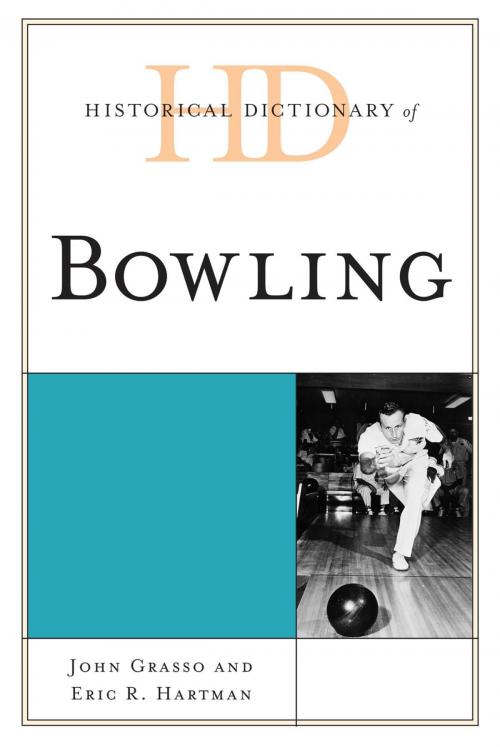Historical Dictionary of Bowling
Nonfiction, Sports, Individual Sports, Bowling, Reference & Language, Dictionaries, Reference| Author: | John Grasso, Eric R. Hartman | ISBN: | 9780810880221 |
| Publisher: | Rowman & Littlefield Publishers | Publication: | August 7, 2014 |
| Imprint: | Rowman & Littlefield Publishers | Language: | English |
| Author: | John Grasso, Eric R. Hartman |
| ISBN: | 9780810880221 |
| Publisher: | Rowman & Littlefield Publishers |
| Publication: | August 7, 2014 |
| Imprint: | Rowman & Littlefield Publishers |
| Language: | English |
Loggats, kayles, quilles, skittles, half-bowl and ninepins were all early forms of games in which the goal was to knock down small standing objects from a distance by rolling or throwing another object at them. Archaeologists have found items from Egypt around 5200 B.C. that included small stone balls and narrow pins that were possibly used for a game. Additional research has disclosed that Polynesians played a similar game, using small elliptical balls and round flat stone disks, and, like modern-day bowling, a sixty-foot throwing distance.
The Historical Dictionary of Bowling contains a chronology, an introductory essay, appendixes, and an extensive bibliography. The dictionary section has over 500 cross-referenced entries on both male and female bowlers, amateur and professional, bowling coaches, writers and other contributors to the sport of bowling; descriptions and results of major tournaments and terminology of the sport. This book is an excellent access point for students, researchers, and anyone wanting to know more about the sport of Bowling.
Loggats, kayles, quilles, skittles, half-bowl and ninepins were all early forms of games in which the goal was to knock down small standing objects from a distance by rolling or throwing another object at them. Archaeologists have found items from Egypt around 5200 B.C. that included small stone balls and narrow pins that were possibly used for a game. Additional research has disclosed that Polynesians played a similar game, using small elliptical balls and round flat stone disks, and, like modern-day bowling, a sixty-foot throwing distance.
The Historical Dictionary of Bowling contains a chronology, an introductory essay, appendixes, and an extensive bibliography. The dictionary section has over 500 cross-referenced entries on both male and female bowlers, amateur and professional, bowling coaches, writers and other contributors to the sport of bowling; descriptions and results of major tournaments and terminology of the sport. This book is an excellent access point for students, researchers, and anyone wanting to know more about the sport of Bowling.















